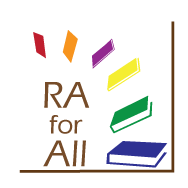In this article, Wyatt was expanding upon her previously published arguments about the evolution of RA service. From the mid-1980s to 2006, the primary tool of the Readers' Advisor was the read alike. I talk about read alikes almost daily on this blog and in my work, and they still are an excellent tool for finding new reading suggestions for yourself or your patrons. However, as Wyatt rightfully points out, "Read-alikes do not lend themselves well to experiencing the world of a book or exploring its references."
Her solution, reading maps:
"Reading maps are web-based visual journeys through books that chart the myriad associations and themes of a title via other books, pictures, music, links to web sites, and additional material. Reading maps open up the world of the book for the reader by diagramming the internal life of the book, allowing readers to inhabit the text and its outward connections, and enabling readers to follow threads of interest that stem from any particular part of the work."
Neal has traveled all over the country teaching librarians how to create reading maps. We have even had her come to our class to show our students how reading maps work.
Tomorrow night, I will be showing the class why and how reading maps work for RA service. Here is my first (still incomplete) attempt at a reading map for The Good Thief by Hannah Tinti.
There are 2 main keys to creating a reading map. First, chose the right book or subject. It needs to be something you can really get into since it is a fun, but time consuming, process to create a reading map. The subject also needs to lend itself to being explored in many directions. Second, you need to chose a platform to create your interactive reading map. I have used pbwiki. Whatever you chose, you need to embrace the Library 2.0 model of giving your patrons the ability to dictate their library experience by utilizing the technology of Web 2.0 design.
For example, a wiki, like I have set up, can not only be created to contain many links which can take the patron in many different directions, but also, it has features which would allow patrons to comment, modify, and even add to the reading map. Thus, it is never a static document, as the old fashioned pathfinder was. It is a continuously evolving tool to aid the library user in pursuing their next good read.
For more examples of reading maps, I have included this page in my reading map of The Good Thief which has links to some great examples from other libraries. Hopefully, after class tomorrow, some of my students will be inspired to create reading maps of their own for their final projects.
Neal has traveled all over the country teaching librarians how to create reading maps. We have even had her come to our class to show our students how reading maps work.
Tomorrow night, I will be showing the class why and how reading maps work for RA service. Here is my first (still incomplete) attempt at a reading map for The Good Thief by Hannah Tinti.
There are 2 main keys to creating a reading map. First, chose the right book or subject. It needs to be something you can really get into since it is a fun, but time consuming, process to create a reading map. The subject also needs to lend itself to being explored in many directions. Second, you need to chose a platform to create your interactive reading map. I have used pbwiki. Whatever you chose, you need to embrace the Library 2.0 model of giving your patrons the ability to dictate their library experience by utilizing the technology of Web 2.0 design.
For example, a wiki, like I have set up, can not only be created to contain many links which can take the patron in many different directions, but also, it has features which would allow patrons to comment, modify, and even add to the reading map. Thus, it is never a static document, as the old fashioned pathfinder was. It is a continuously evolving tool to aid the library user in pursuing their next good read.
For more examples of reading maps, I have included this page in my reading map of The Good Thief which has links to some great examples from other libraries. Hopefully, after class tomorrow, some of my students will be inspired to create reading maps of their own for their final projects.









No comments:
Post a Comment